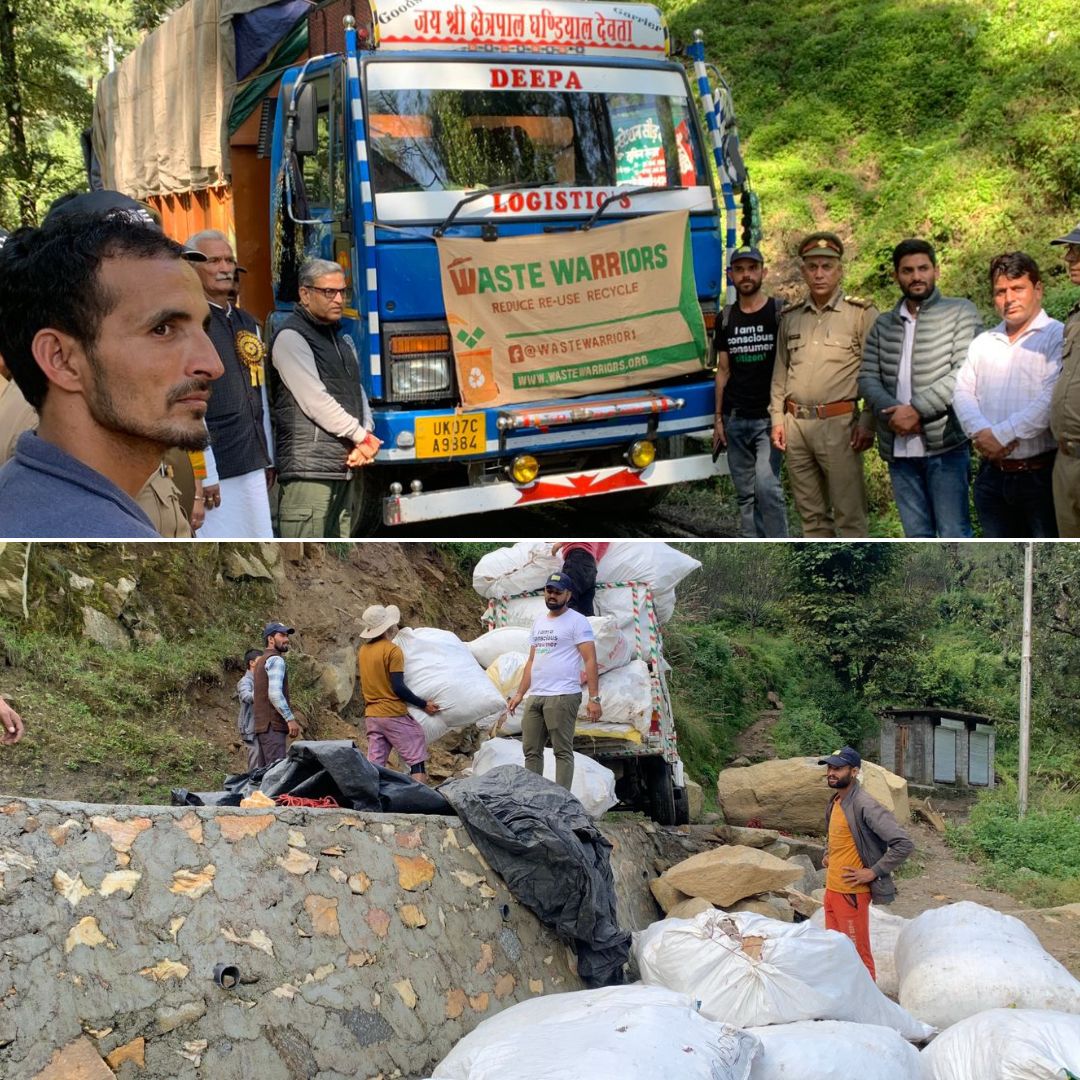
Image Credit: Waste Warriors
With A Vision To Preserve Himalayan Environment, Know How This Organisation Is Carrying Out Waste Management
Uttarakhand, 20 Oct 2022 7:25 AM GMT
Editor : Shiva Chaudhary |
A post-graduate in Journalism and Mass Communication with relevant skills, specialising in content editing & writing. I believe in the precise dissemination of information based on facts to the public.
Creatives : Ronit Kumar Singh
A confident and reliable journalist who always desires to toss the unheard voices. I cover politics and governance extensively through stories.
Untreated waste significantly impacts the environment, affecting lives in numerous ways. To tackle the issue, Waste Warriors was founded in 2012 with a vision to improve waste management in eco-sensitive areas along the Himalayan Landscape.
Untreated waste severely affects the environment and goes beyond touching all life forms. In India, 62 million tons of municipal solid waste is produced annually, out of which less than half are treated. The rest of the untreated waste is either dropped at a landfill site or dumped in a water body. In some cases, the burning of solid waste is also carried out.
All the informal ways of treating waste are a negative indicator of a healthy environment. It doesn't only affect the environment but also the essence of the place. Most tourist places produce the maximum amount of solid waste that goes untreated. Over time, it degrades the quality of the tourist site, leaving a wrong impression on all.
To tackle the prevalent issue, Waste Warriors was founded in 2012. Being a not-for-profit organisation, it aims to improve waste management in eco-sensitive areas along the Himalayan Landscape. With a full-time team strength of 120 plus warriors, it executes groundwork in Uttarakhand and Himachal Pradesh.
The purpose-driven organisation operates in Dehradun, Rishikesh, Mussoorie, Jim Corbett Tiger Reserve, Govind Wildlife Sanctuary, Dharamshala, Bir Billing, and Kasauli with the support of Government, Foundations, CSR contributions, and individual donations.
The Waste Warriors works on an integrated approach in partnership with government bodies to execute Zero Waste Program, Waste Education Program and Waste Worker Upliftment Program. It has driven several initiatives based on three principles- reduce, reuse and recycle and believes that waste management systems will be successful in the long run only when the local government and the community take ownership of the project.
Waste Management Program
Since its inception, the organisation has worked effortlessly to serve society by bringing an efficient waste management system. Recently, on the occasion of Gandhi Jayanti, October 2, a whopping 5 metric tonnes of waste was transferred from Govind Wildlife Sanctuary (GWS) in Uttarkashi, Uttarakhand, to a material recovery facility in Dehradun. The waste was collected and brought down from high-altitude remote villages inside a snow leopard conservation area.
According to the organisation, this was an unprecedented incident in the history of GWS- a village where solid waste management was a far-off dream. The governor of Uttarakhand, Lieutenant General Gurmit Singh, and the Uttarakhand Forest Department felicitated the Waste Warriors Society for their incredible achievement.
The organisation also works around behavior change and conducts awareness campaigns to engage with local communities and school children. The effort is to spread awareness about waste management and the consequences if it's underdone.
While talking with The Logical Indian, the organisation said, "In India, social stigma around waste hinders community mobilisation and behavioral change, leaving waste management in the hands of people unaware of waste segregation. To address these issues and drive public participation, we conduct awareness programs, and IEC (Information, Communication, and Education) exercises to drive community-level changes in waste management."
Reasons Behind Waste Management At GWS
The primary reason behind the waste management program at GWS was the significant waste generation in the area. With one year of experience working in the region, the organisation claims that the GWS generates over 1 Lakh kg of non-biodegradable waste annually, all of which ends up in the natural environment within the most eco-sensitive region is simply no waste management infrastructure available.
Additionally, the growing tourism and change in consumption patterns are causing equal destruction to animal and plant life. Over two lakh tourists visit this region annually, and the number is projected to increase exponentially. There have been cases where plastic pieces were found in animals' poop at the core zone of the sanctuary, which is an alarming sign.
The area comprises Rupin and Supin valleys that form an important catchment for the Tons river, the main tributary of the Yamuna river. The waste finds its way to the river through rivulets. Through this waste management program at GWS, the organisation intends to tackle all the prevalent issues.
Untreated Waste & Climate Change
The waste generation is expected to rise with the increase in population and footfall of tourists. The major concern arises when those wastes are not treated and regulated properly. In many cases, people choose to dump it in water bodies or burn them in open spaces. All such methods of rough treatment of waste contribute majorly to climate change.
According to the organisation, the effects of climate change are now seen in Uttarakhand. In Haltari village, the apple flowers have started drying, which is a rare thing to witness. The region's snowfall level has also been irregular, affecting most of the lives dependent on the same. Moreover, the dry-waste smoke drives pollinating agents like bees and butterflies away.
Through its efforts, the organisation aims to drive change in the region sustainably. The same results might not be visible quickly, but they would happen in the long term with the collective efforts of local communities, organisations, and the government.
 All section
All section














